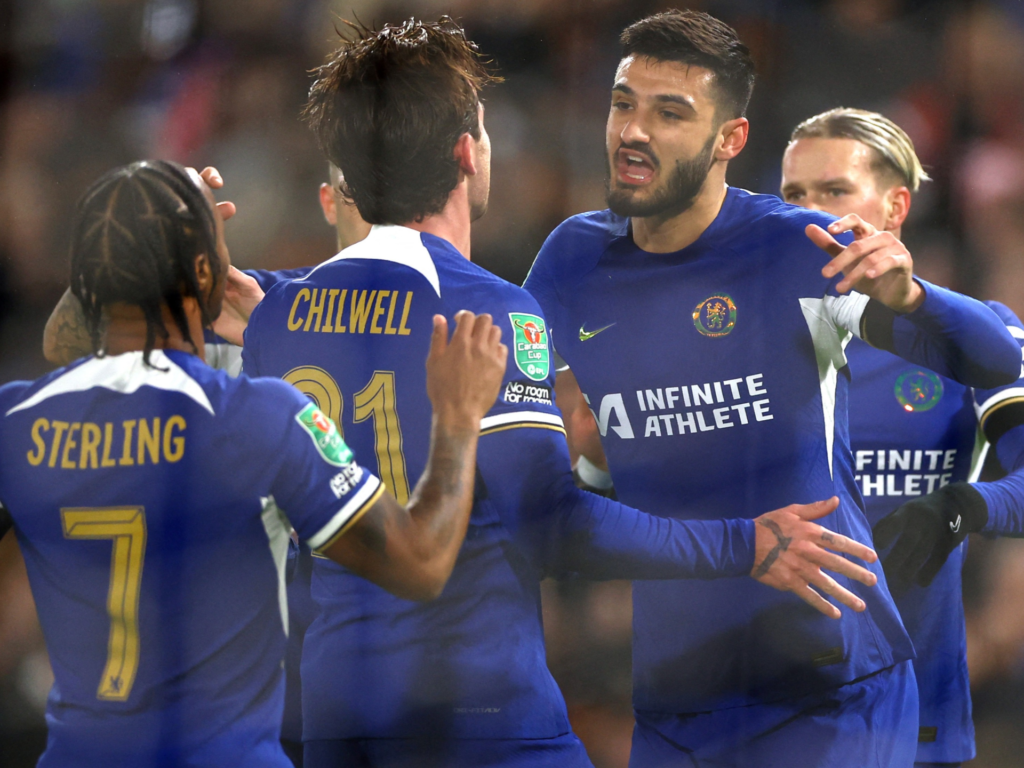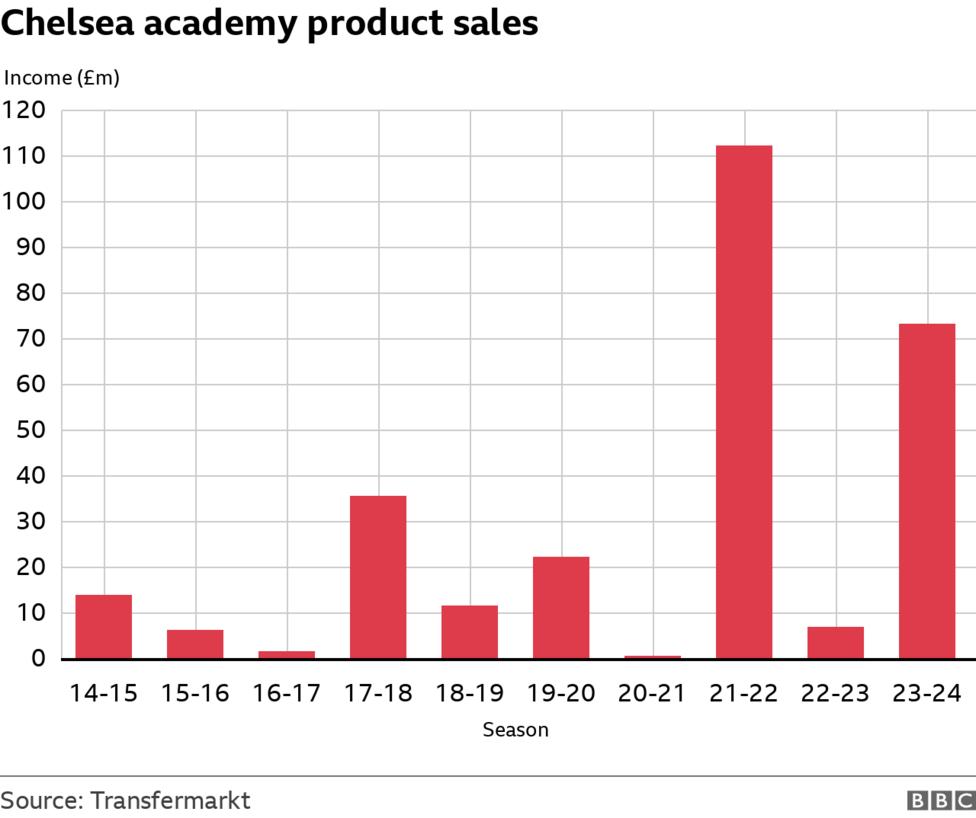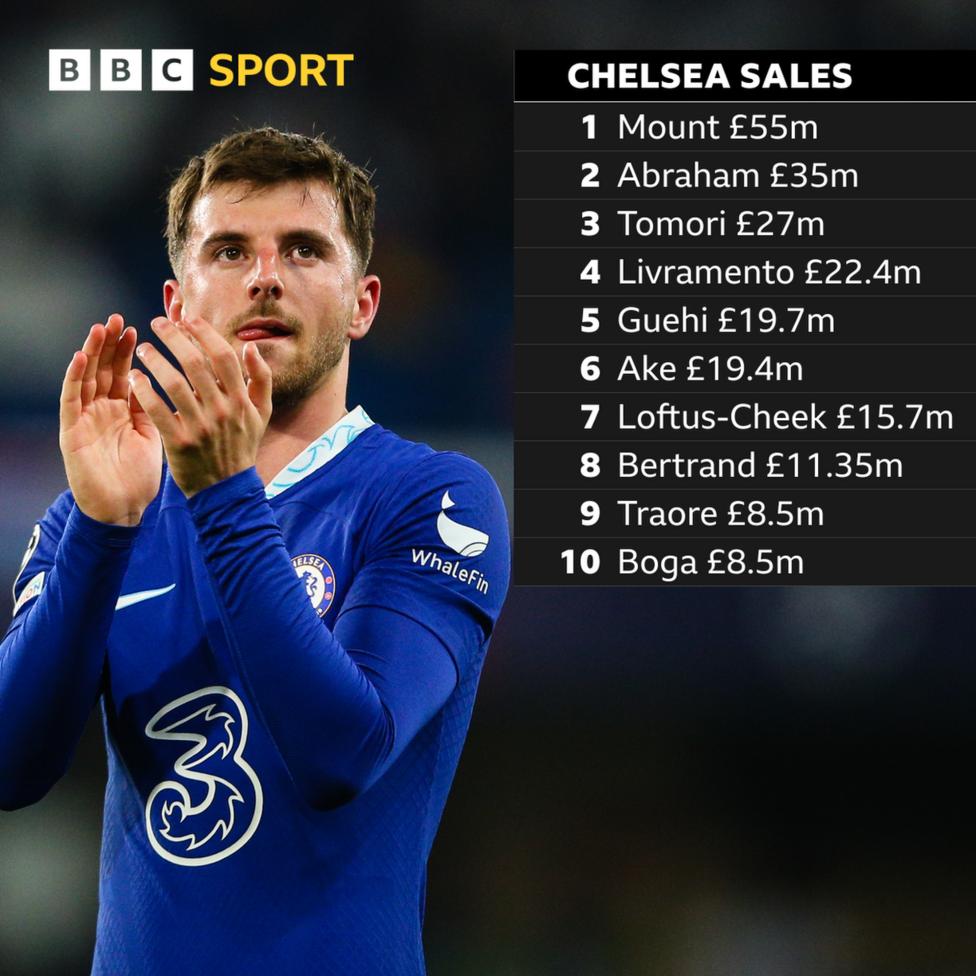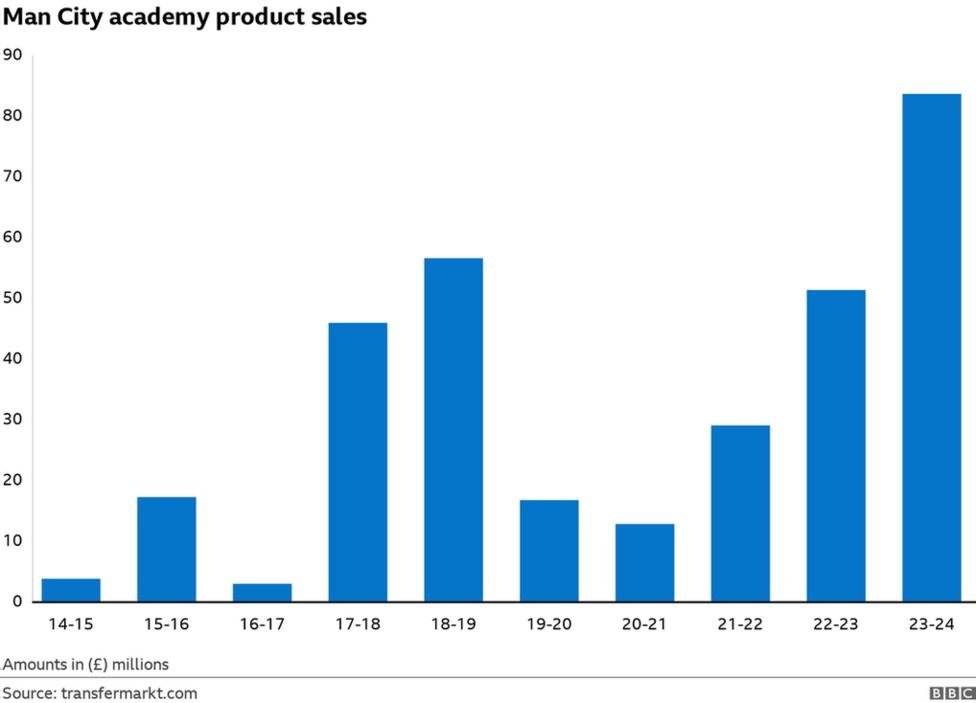
Chelsea’s financial influence has been prominent in recent transfer windows, but the departure of their latest academy graduate Armando Broja – who was initially loaned to Fulham – stood out as the most intriguing deal on a relatively calm deadline day.
The Blues are considering the possibility of selling both Broja and fellow youth product Conor Gallagher if the right offer comes along. This reflects a growing trend among Premier League clubs to part ways with former academy players.
When clubs transfer academy graduates, like Manchester City’s £40m sale of Cole Palmer to Chelsea in the summer, the entire amount is recorded as ‘pure profit’ in their accounts. This can assist them in adhering to the top flight’s stringent profit and sustainability regulations.
Although it may disappoint fans to see homegrown players departing, clubs can benefit from generating funds through their academies, enabling them to continue making significant investments. Chelsea and City have proven to be highly successful in this regard, ranking among the top clubs in Europe.
BBC Sport has provided a concise analysis of the numbers, examining how both clubs have utilised revenue from academy player sales to support their transfer spending.

Ever since the Todd Boehly-led consortium assumed control of Chelsea in 2022, the club has invested nearly £1bn in acquiring players. However, a substantial portion of this expenditure has been balanced out by player sales, ensuring that the club avoids the financial predicaments currently impacting Everton and Nottingham Forest.
Since the beginning of the 2014-15 season, Chelsea has parted ways with 39 players who had previously been part of their youth teams.
The academy graduate sales have generated a total of £285m, according to Transfermarkt.
That amounts to roughly 25% of Chelsea’s total income of £1.1bn from player sales in the last ten years. Since the 2014-15 season, no other club in Europe has generated as much revenue from player sales.
Additionally, Chelsea is expected to receive £28m from Newcastle for the transfer of 19-year-old left back Lewis Hall during the upcoming summer.
In the year before the Boehly-led takeover, 2021-22, Chelsea generated £112m of ‘pure profit’ from the sale of former-academy players.

City driving prices on lesser-known talent
Palmer’s transfer from Man City to Chelsea last August caused quite a stir – a player who had been with City since the age of eight making a move to a top-flight rival.
The playmaker recently left the academy, becoming the ninth graduate to do so in the past two seasons. He made the move to Mauricio Pochettino’s side in a deal worth an initial £40m.
Out of the nine sales, Palmer stands out as the sole player who has had the opportunity to make senior appearances for Pep Guardiola’s team.

However, in the last decade, City has generated approximately £320m from their homegrown players, accounting for almost half of their total transfer income during that time.
The city has achieved remarkable success in securing high prices for players who are relatively new to the game. For instance, Gavin Bazunu fetched a reported fee of £12m in 2022, while James Trafford received an upfront payment of £15m when he departed for Burnley in July 2023.
Another study conducted by the CIES Football Observatory ranks City among the top 10 most profitable club academies globally. Leading the way are Benfica and Ajax, with Tottenham also making the list, thanks to the lucrative sales of England striker Harry Kane and midfielder Harry Winks during the summer.
Furthermore, due to the ongoing impact of the Premier League’s financial regulations, it is anticipated that clubs will persist in offloading promising young talents from their academies in order to maintain their financial stability.





More Stories
Flash Floods on Bank Holidays Damage roads and Railroads
Drake Disputes Charges of Underage Relationships in Kendrick Lamar’s Song
A Presidential Poll in Chad is Expected to end Military rule